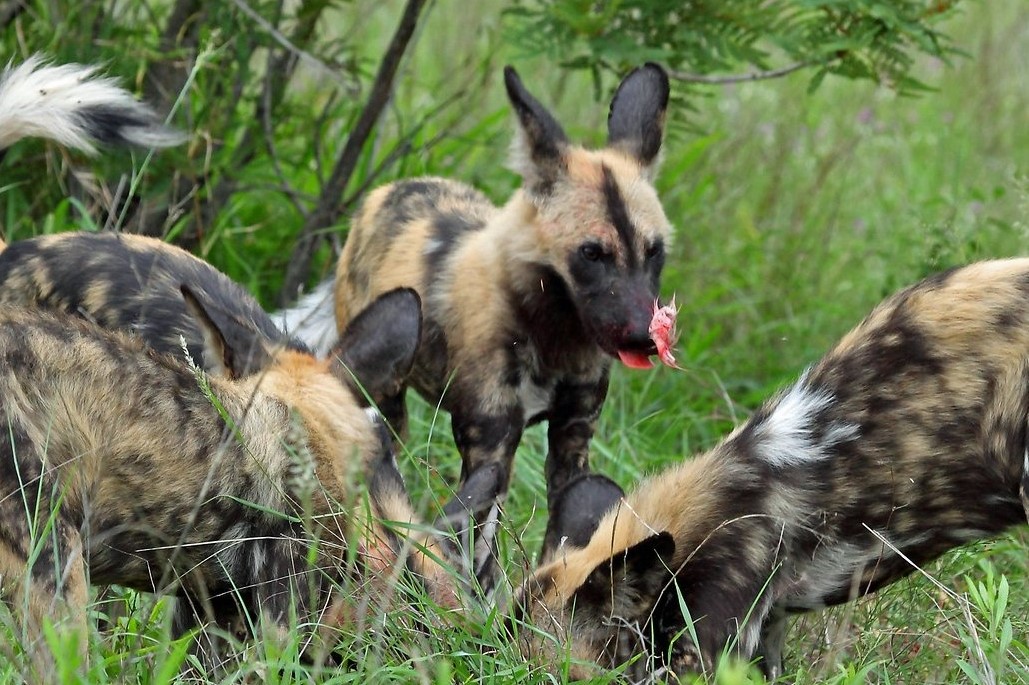The Endangered Elegance: African Wild Dogs in Uganda
African Wild Dogs in Uganda – (Lycaon pictus). Nestled in the heart of East Africa, Uganda boasts a rich tapestry of biodiversity, and among its most captivating inhabitants is the African wild dog (Lycaon pictus). Also known as the African painted dog or Cape hunting dog, this species stands out with its unique coat pattern and highly social behavior. However, despite their distinct charm, African wild dogs face numerous threats, making their conservation a critical endeavor.
Physical Characteristics:
African wild dogs are easily recognizable by their striking coat patterns, which resemble a vibrant mosaic of black, yellow, and white. Each individual has a unique pattern, facilitating easy identification. With a lean build and large ears, these dogs are well-adapted for endurance running, an essential trait for their hunting strategy.
Distribution and Habitat:
African wild dogs were once widespread across the African continent, but their population has drastically declined over the years. In Uganda, these elusive canids are primarily found in protected areas of Kidepo Valley National Park. Their habitat preference includes grasslands, savannas, and woodland areas where prey is abundant.
Social Structure and Behavior:
One of the most fascinating aspects of African wild dogs is their highly social nature. They live in packs led by an alpha pair, and every member plays a crucial role in the survival of the group. Pack members exhibit strong bonds, communicated through vocalizations, body language, and communal activities. Their cooperative hunting strategy ensures the success of the pack, as they work together to bring down prey.
Reproduction and Lifecycle:
African wild dogs have a complex breeding system. Only the alpha pair typically breeds, and the entire pack contributes to the care and protection of the pups. The gestation period is approximately 70 days, and a litter may consist of 6 to 16 pups. The survival of the pups relies heavily on the pack’s ability to provide food and protection.
Threats to African Wild Dogs in Uganda:
Despite their incredible adaptability, African wild dogs face severe threats that have led to a decline in their population. Habitat loss, human-wildlife conflict, and diseases transmitted by domestic dogs are some of the major challenges. Additionally, the fragmentation of their natural habitats puts them at risk of inbreeding, reducing genetic diversity.
Conservation Efforts:
Recognizing the urgency of protecting African wild dogs, conservation organizations in Uganda are actively involved in efforts to safeguard their future. Conservation strategies include habitat restoration, community education on coexisting with wildlife, and monitoring and research initiatives to better understand the needs of these animals.
Conclusion: – African Wild Dogs in Uganda – (Lycaon pictus)
The African wild dog’s presence in Uganda is a testament to the country’s commitment to preserving its rich biodiversity. As we strive to protect these endangered canids, it is crucial to raise awareness, support conservation efforts, and ensure that future generations can witness the grace and beauty of the African wild dog in its natural habitat; By embracing sustainable practices and fostering coexistence, Uganda can play a vital role in securing the survival of this unique and endangered species.








